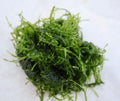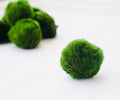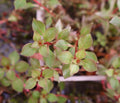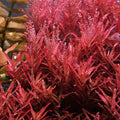A Full Guide to the Fascinating World of Nerite Snails
Nerite snails are interesting creatures that have won the hearts of many people who like to keep aquariums. With their unique shell patterns, ability to eat algae, and ability to live in different types of aquariums, these snails are a great addition to any water setting. In this in-depth guide, we'll talk about Nerite Snails' appearance, behavior, natural environment, care needs, and other interesting facts.
Nerite snails (Family: Neritidae) are a diverse group of gastropod mollusks that are known for the patterns and colors on their shells. Their shells have complicated patterns on them, like zebra stripes, swirls, and dots. The shells can be black, brown, yellow, or dark green, among other colors. One interesting thing about Nerite Snails is that each one has a different design on its shell. This makes them very popular among people who like to keep aquariums.
They live in the coastal parts of the Indo-Pacific region, which is where they are most likely to be found in the wild. They live in places like rivers, streams, marshes, and mangrove swamps that have both freshwater and saltwater. The intertidal zones are a good place for these snails to live because they can handle changes in salinity and being exposed to air during low tide.
They are popular because they keep algae from growing in tanks. They eat algae like crazy and can do a good job of eating different kinds, like green spot algae and diatoms. This makes them a great addition to aquariums with plants or tanks where algae is a problem.
They are usually peaceful in aquariums and can live with fish, shrimp, and other snail species. But it's crucial to be aware that some fish, especially those that enjoy eating snails, might try to eat them. Before putting two fish in the same tank, it's best to find out if they'll get along. This will make sure that everyone is happy and there's no stress.
How to Feed, Care for, and Maintain Nerite Snails
Nerite snails mostly eat algae, so feeding them isn't too hard. In aquariums where there isn't enough algae growth, you can add algae wafers or blanched veggies like zucchini or spinach to their food. To keep them healthy and thriving, it is important to give them a varied diet.
They need to keep the water conditions stable in order to stay healthy. They like water that is steady, with a pH level between 7.5 and 8.5 and a temperature between 72 and 78°F (22-25.5°C). The best conditions for these snails will be reached through regular water tests, care, and partial water changes.
They need calcium-rich water for their shells to grow and stay healthy. This can be done by giving the bacteria a base that gives off calcium, like broken coral or aragonite sand. It is also important to keep the snails away from quick changes in the water or medicines that could hurt their fragile shells.
Fun and Interesting Facts
- Nerite Snails don't have both male and female organs like many other kinds of snails. They have different male and female snails, and both are needed to make babies.
- Nerite Snails lay their eggs in fresh water, but the young need salt water to grow and finish their life cycle.
- Even though they are small, Nerite Snails are very good at cleaning. They can move around the tank without stopping, eating algae and other things they find along the way.
- The Zebra Nerite Snail (Neritina natalensis), the Tiger Nerite Snail (Neritina semiconica), and the Olive Nerite Snail (Vittina waigiensis) are all famous types of Nerite Snails.
Nerite Snails are beautiful and useful creatures that can make your tank look better and work better. Aquarists love them because of their unique shell patterns, their ability to eat algae, and how well they get along with other fish and tank setups. By giving them the right care, a balanced diet, and the right surroundings, you can keep your tank clean and algae-free while enjoying the company of these interesting snails.
















